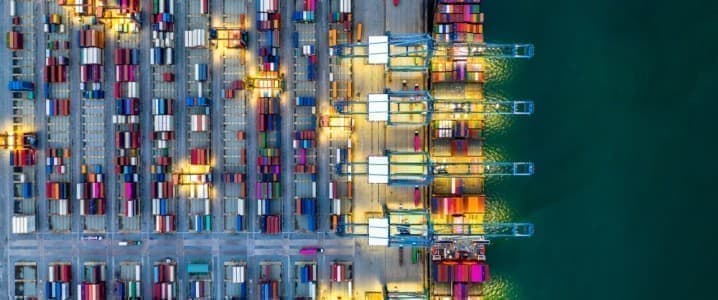Red Sea diversions mean container lines need more ships to carry the same amount of cargo. The security situation — which is even more precarious in the near term due to coalition air strikes in Yemen — has already driven spot container freight rates much higher. Now it is starting to push up the price container lines pay to rent ships.
“This week saw a scramble for prompt tonnage,” said MB Shipbrokers (formerly Maersk Broker) in a market report on Friday, referring to ships that can be chartered immediately.
“Owners have certainly become more bullish and are pushing for higher-than-last-done levels in all segments and most regions.” Charter rates are headed higher, “specifically for short periods of three to six months’ duration,” said MB Shipbrokers.
Shipbroker Braemar reported Sunday: “Chartering activity [has] further improved. Various prompt vessels across all sizes and regions [are] seeing increased interest. Charter rates as well as periods are witnessing a firming trend.”
Analytics group Alphaliner commented on charter-market strength in a report last Tuesday, noting that the Red Sea effect is now “starting to show.”
“Despite a continued influx of newbuilding tonnage of all types, demand for most sizes of charter-market ships … remains strong. The crisis in the Red Sea, with most carriers now avoiding the area, is in part contributing to the market’s brisk activity,” said Alphaliner.
Spot freight rates rise much faster than charter rates
The initial diversions away from the Red Sea caused delays in return trips to Asia, prompting liners to charter ships for short terms as “extra loaders” to pick up the slack.
Now that diversions are more ensconced, liners will need to add additional vessels to service strings to maintain weekly schedules, given the longer voyage distance around the Cape of Good Hope.
To the extent newbuildings and existing fleets don’t fill the gap, they would need to charter or buy more ships.
The Harpex index, which measures six- to 12-month charter rates for ships with capacity of up to 8,500 twenty-foot equivalent units, has risen 12% since mid-December.
That pales in comparison to Red Sea-driven moves in freight rates. The global spot freight indexes of both Freightos and Drewry have more than doubled over the same stretch.
But 2024 was supposed to be a very weak year for charter rates given the tidal wave of newbuilding deliveries, and thanks to the Red Sea effect, the Harpex index is now 28% higher than it was in January 2019, pre-COVID.
“Obviously, a persistent crisis in the Red Sea and, to a lesser extent, ongoing problems at the Panama Canal could partially cushion the risk of overcapacity thanks to the demand for extra tonnage they will generate,” said Alphaliner.
Few container ships available to charter
The challenge in today’s chartering market is that there are very few vessels available to charter. Most of the tonnage is already tied up on long-term leases.
Liners were desperate for ships during the supply chain crisis. The more ships they controlled, the more containers they could carry at stratospheric freight rates, and the more profits they could reap.
The companies that charter ships to liners — so-called non-operating owners (NOOs) — could dictate the terms. Not only did NOOs demand historically high charter rates during the peak of the COVID-era boom, they also forced liners to take the ships on multi-year charters. Most of those leases are still in place.
Among the U.S.-listed NOOs, Danaos (NYSE: DAC) has 90% of its fleet already locked up on charters through the end of 2024. Charter coverage of Costamare (NYSE: CMRE) is 87% for 2024, with Global Ship Lease (NYSE: GSL) at 82% and Euroseas (NASDAQ: ESEA) at 70%.
Another source of chartered tonnage is “relets” — ships that liners have on long-term charter from NOOs that they opt to re-charter to other liners. But some of these relet opportunities are now being withdrawn, reported MB Shipbrokers.
In general, “the limited availability of prompt tonnage” is keeping chartering activity “at a low level,” it said.
Liner stocks up more than NOO stocks
Liner company stocks should benefit more from Red Sea disruptions than NOO stocks, given that freight rates have risen much faster than charter rates, and so many ships are already locked into existing leases.
Shares of liner operator Zim are up 65% from mid-December through Friday, with Hapag-Lloyd up 45% and Maersk up 19%. In contrast, shares of GSL are up only 9% over the same period, with Costamare rising 10% and Danaos 11%. Shares of Euroseas, which have the most open exposure to the 2024 charter market of the four companies, have performed the best, rising 37%.
By Greg Miller of FreightWaves via Zerohedge.com
More Top Reads From Oilprice.com:
- Is the Texas Grid Ready for This Year’s Polar Vortex?
- Top Oil and Financial Firms Made $424 Billion in Windfall Profits in Two Years
- Tesla's Aggressive Pricing Strategy Hits European Auto Stocks


















